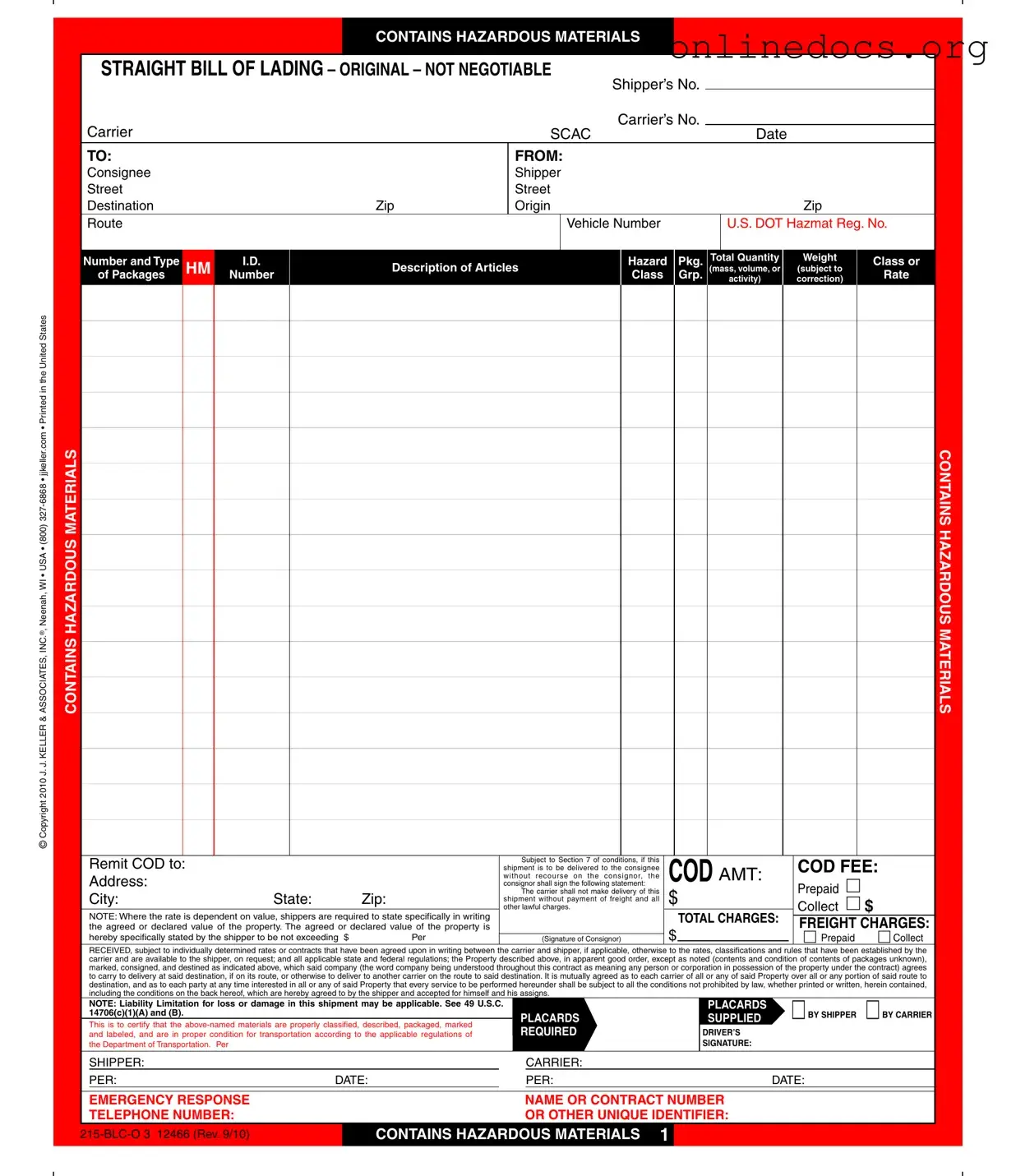The Hazard Bill of Lading form shares similarities with the standard Bill of Lading, which is a crucial document in the shipping industry. Both documents serve as a receipt for goods and a contract between the shipper and the carrier. A standard Bill of Lading outlines the details of the shipment, including the type of goods, the destination, and the responsibilities of each party. However, the Hazard Bill of Lading specifically addresses the transportation of hazardous materials, ensuring compliance with safety regulations and providing additional information about the handling of dangerous goods. This distinction is vital, as it helps protect both the carrier and the public from potential hazards associated with these materials.
Another document comparable to the Hazard Bill of Lading is the Air Waybill. Like the Hazard Bill, the Air Waybill serves as a contract between the shipper and the carrier, detailing the specifics of the shipment. While the Hazard Bill is used primarily for ground transportation, the Air Waybill is utilized for air transport. Both documents include essential information such as the shipper's and consignee's details, the nature of the goods, and any special handling instructions. However, the Air Waybill often emphasizes speed and efficiency, reflecting the expedited nature of air freight, whereas the Hazard Bill places a stronger focus on safety and regulatory compliance due to the nature of the materials being transported.
The Uniform Commercial Code (UCC) also bears similarities to the Hazard Bill of Lading, particularly in its provisions regarding the sale of goods. The UCC governs transactions involving the sale of goods and outlines the rights and obligations of buyers and sellers. In the context of shipping, the Hazard Bill of Lading operates under the principles established by the UCC, ensuring that both parties understand their responsibilities. This connection is particularly important when dealing with hazardous materials, as the UCC provides a framework for addressing issues such as liability and breach of contract, which are critical when transporting potentially dangerous goods.
In addition to the various transportation documents mentioned, it is important to have proper forms for transactions, such as the New York Trailer Bill of Sale, which facilitates the transfer of trailer ownership in the state. To generate or obtain this essential form, you can visit legalformspdf.com, ensuring that all legal aspects of the sale are thoroughly documented.
Finally, the Dangerous Goods Declaration form is another document closely related to the Hazard Bill of Lading. This declaration is specifically designed for shipments containing hazardous materials and serves to inform carriers and regulatory authorities about the nature of the goods. While the Hazard Bill of Lading provides a comprehensive overview of the shipment, including details about the carrier and consignee, the Dangerous Goods Declaration focuses on the specific hazards associated with the materials being transported. Both documents work in tandem to ensure the safe and compliant transport of hazardous materials, with the declaration serving as a critical component of the overall shipping process.
